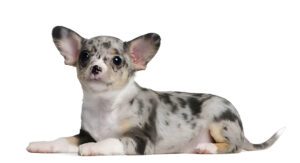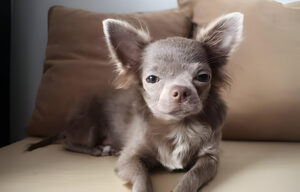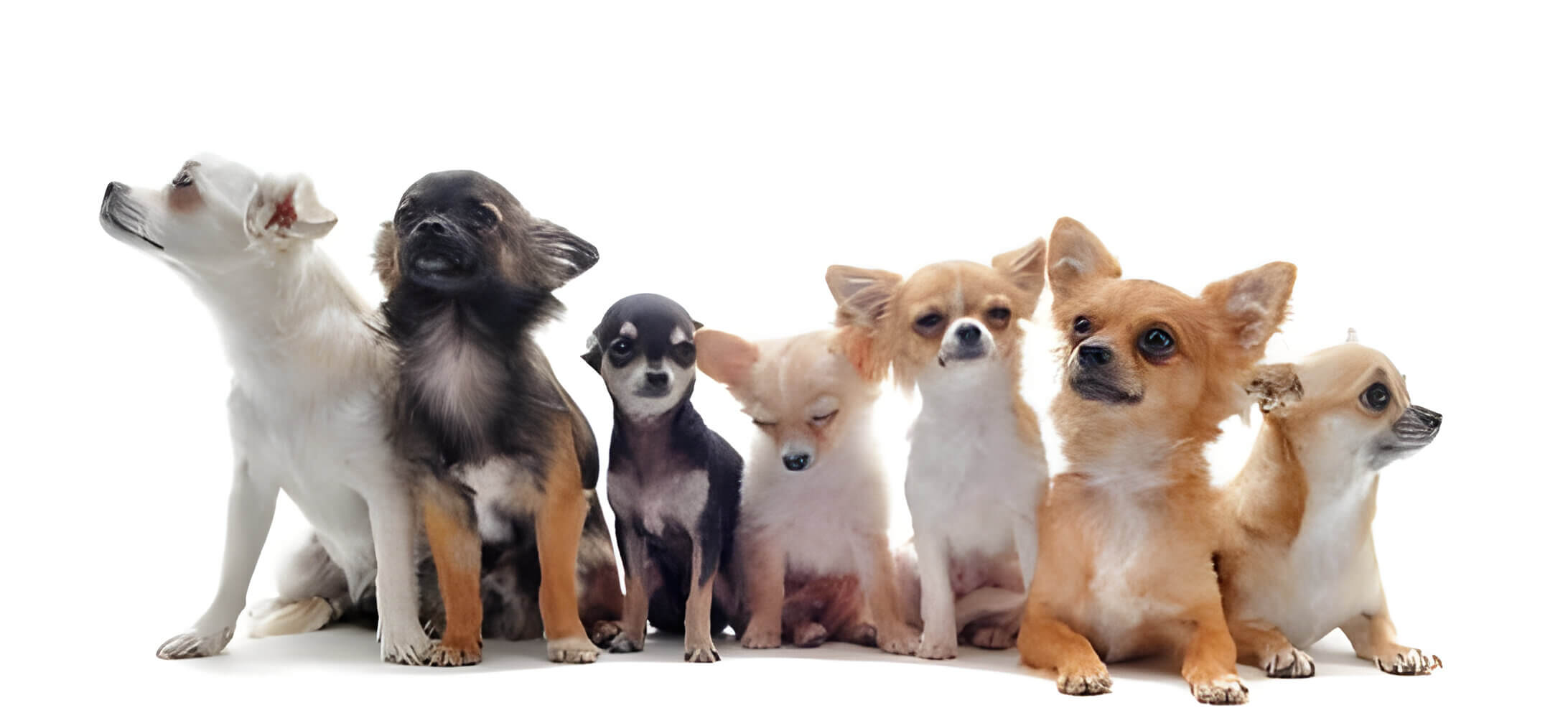When it comes to Chihuahuas, the array of possible coat colors is both fascinating and surprisingly diverse. While the familiar tan or black Chihuahuas are quite common, did you know that this breed also flaunts a range of rare and stunning coat colors? From the marvelous merle to the captivating cream, some Chihuahua colors are truly unusual and unique. Whether you are a prospective Chihuahua owner or simply intrigued by canine genetics, understanding these rare colors is essential. Dive into the world of Chihuahua diversity and discover what makes these uncommon hues as special as they are.
Takeaway
Rare Chihuahua colors include Pure White, Lavender, Pure Blue, Solid Black, Brindle, Merle, and Chocolate. These unique colors and patterns, often tied to specific genetic factors, make these Chihuahuas stand out, but may also require additional consideration when it comes to their care and health maintenance.
What Makes Chihuahua Colors Rare?
Certain Chihuahua colors are considered rare due to genetics and the frequency of their occurrence. The rarity of a Chihuahua’s color largely depends on the genetic combination of the parent dogs and how often that combination results in a specific color. For instance, pure white and brindle Chihuahuas are less common than their fawn or black and tan siblings, making them ‘rare’.
- Popularity and Demand: Sometimes, the rarity of a color can increase its demand among potential dog owners. This can lead to certain colors being considered more valuable, even though the rarity does not necessarily indicate a superior dog in terms of health or temperament.
- Breeding practices: Reputable breeders might not always intentionally breed for rare colors due to the emphasis on health and temperament over color. Additionally, some rare colors are associated with health concerns. For instance, the merle coloration has been linked to auditory and ocular abnormalities. Thus, ethical breeding practices can impact the frequency of these colors.
- Genetic Rarity: The genes required for rare colors such as merle or lavender are less commonly found in the Chihuahua gene pool. These colors result from specific genetic combinations that do not occur frequently. The merle gene, in particular, causes a mottling effect of darker spots against a lighter background, and because it is a dominant gene, it can overshadow other colors making the breeding process for specific rare colors more complex.
What Are the Most Common Chihuahua Colors?
The most common Chihuahua colors include fawn, cream and white. Each of these colors can appear in a variety of shades and may be solid or mixed with other colors in patterns such as brindle, spotted, or merle.
- Fawn: This shade can range from a light tan to a deep deer-like hue, often seen as a solid color or mixed with other colors in the Chihuahua’s coat.
- Cream: A softer and more subtle color, cream can range from an almost white to a light brown tint.
- White: Pure white Chihuahuas are less common and may have a snowy, stark white coat that is often sought after for its striking appearance.
What are the Rarest Colors in Chihuahuas?
Chihuahuas are known for a spectrum of coat colors, but some of the rarest hues include Chocolate, Merle, Brindle, Solid Black, Pure Blue, Lavender (Lilac), and Pure White. These colors are considered rare due to their distinctive appearance, limited occurrence, and unique genetic combinations. Below is a detailed description of the rarest Chihuahua colors, their appearance, and the genetics behind their rarity.

#7. Chocolate
Chocolate Chihuahuas possess a rich, deep brown color that can range from a light milky shade to an almost dark, cocoa hue. This color is uniform across their coat, often accompanied by hazel or brown eyes, adding to their distinctiveness.
The chocolate color in Chihuahuas is a result of a recessive gene, meaning that both parents must carry this gene for their offspring to exhibit the color. The rarity of this gene contributes to the chocolate Chihuahua’s distinctiveness.

#6. Merle
Merle Chihuahuas showcase a stunning pattern rather than a solid color, with mottled patches of color against a lighter background. This can affect their entire coat, eyes, and even their skin, giving them a unique, dappled look.
The merle pattern is caused by a dominant gene, which means it can present even if only one parent passes down the gene. However, due to associated health risks and breeding ethics, the merle pattern remains rare.

#5. Brindle
Brindle Chihuahuas have coats that display a tiger-stripe or marbled effect, with a mix of colors that blend together, yet create a distinguishable pattern.
The brindle pattern is due to a complex genetic interaction, which makes it less common. This pattern can vary greatly, contributing to its uniqueness among Chihuahuas.

#4. Solid Black
Solid black Chihuahuas are completely black, including their fur, paw pads, noses, and eyes, giving them a sleek and uniform appearance.
For a Chihuahua to be solid black, it must inherit the black color gene from both parents. This complete lack of any marking or other coloration is what makes solid black a rare occurrence.

#3. Pure Blue
Pure blue Chihuahuas have a soft, steel-gray coat, which is often described as blue in the dog world. This unique coloration extends to their nose and paw pads.
The blue color is a dilute form of black and is caused by a recessive gene. Both parents need to carry this gene for a puppy to display the pure blue coat, making it a rare sight.

#2. Lavender
Lavender, or lilac, Chihuahuas have a very distinctive coat that appears as a unique mixture of blue and chocolate, resulting in a soft, grayish color with a purple tint.
This color results from the combination of both the chocolate and blue dilution genes, each of which is rare on its own. Thus, lavender Chihuahuas are exceedingly uncommon.

#1. Pure White
Pure white Chihuahuas lack any pigment on their fur, resulting in a snow-white appearance. Unlike albino dogs, pure white Chihuahuas have normal coloring in their eyes and skin.
A pure white coat results from a lack of melanin, which requires specific genetic conditions. This rarity is due to the gene responsible for white coat being recessive as well as being overlaid by any other color gene, making true pure white Chihuahuas extremely rare.
How to Care for a Chihuahua With a Rare Coat Color
Caring for a Chihuahua with a rare coat color involves the same general practices required for any Chihuahua, but with some extra considerations due to the unique traits associated with certain colors. Here are some tips to help ensure that a Chihuahua with a rare coat color remains healthy and vibrant.
- Grooming and Skin Care: Regular grooming helps manage shedding and keeps the coat in good condition, which is particularly important for dogs with rare colors to maintain their unique appearance. For certain coat textures, like those in merle Chihuahuas, additional brushing may be necessary to prevent matting.
- Protection from the Sun: Chihuahuas with light or pale coats, such as pure white or lavender, can be more prone to sunburn. Use pet-safe sunscreen on exposed areas like the ears and nose, and provide a shady retreat when your dog spends time outdoors.
- Quality Nutrition: A healthy diet is essential for maintaining a lustrous coat and overall health. Consider a diet that includes Omega-3 and Omega-6 fatty acids to promote good skin and coat quality, especially for Chihuahuas with rare colors that might have more sensitive skin.
- Eye and Ear Monitoring: For Chihuahuas with the merle gene, it’s crucial to monitor their vision and hearing regularly, as they may be more prone to issues in these areas. Promptly report any changes in behavior, such as a lack of response to commands or disorientation, to your vet.
What Should Prospective Owners Know About Rare-Colored Chihuahuas?
Prospective owners interested in acquiring a Chihuahua with a rare coat color should familiarize themselves with the specifics about their desired coloration, associated health considerations, and the ethics of breeding practices. Understanding these factors can greatly enhance the experience of owning a rare-colored Chihuahua, ensuring both the owner and the dog have a happy and healthy relationship.
Do Colors Affect a Chihuahua’s Health, Behavior, or Personality?
The color of a Chihuahua’s coat does not directly influence their behavior or personality, but certain colors can be linked to specific health issues. Behavior and personality traits in Chihuahuas, much like in other dog breeds, are influenced more by genetics, environment, and upbringing rather than the color of their coat. However, the genetic factors that contribute to a Chihuahua’s coat color can sometimes carry implications for the dog’s overall health.
Can Your Chihuahua’s Coat Color Change Over Time?
Yes, it is entirely possible for a Chihuahua’s coat color to change as they age. This phenomenon is not unusual and can be attributed to various factors including genetics, health status, and environmental influences. Below are some key points to consider.
- Puppy to Adult: Chihuahuas, like many dog breeds, can go through significant coat color changes from puppyhood to adulthood. The most noticeable changes typically occur in the first few months of life, but some dogs may continue to change until they are about 2 years old.
- Aging: As Chihuahuas age, they may develop gray or white hair, particularly around the muzzle and face, which is a normal part of the aging process. This greying can sometimes appear in other areas of the body, depending on the individual dog.
- Genetics: The genetic makeup of a Chihuahua plays a crucial role in its coat color and the potential for it to change over time. Certain colors and patterns, including those associated with the merle gene, can lead to a more dramatic or unpredictable evolution in coat color.
- Sun Exposure: Prolonged exposure to the sun can lighten the pigment in your Chihuahua’s coat, especially in cases of dogs with darker colors. While this change is usually gradual and minor, it’s something to be mindful of, particularly in ensuring your dog’s skin is protected against UV rays.
- Health and Nutrition: A Chihuahua’s overall health and diet can impact the vibrancy and coloration of its coat. Deficiencies in certain nutrients can lead to a duller coat or faded colors, underscoring the importance of a balanced and nutritious diet.
Understanding the Implications
For prospective Chihuahua owners attracted to a puppy for its rare or unique coat color, understanding that these colors can change significantly as the dog matures is important. While the visual appeal of a rare color might initially draw you to a particular puppy, focusing on health, temperament, and how well the dog fits into your lifestyle is far more critical for a successful, long-term match.
When considering a Chihuahua with a rare coat color, it’s also advantageous to work with reputable breeders who can provide health clearances and detailed information about the puppy’s genetic lineage. This knowledge can help you better understand the potential for color changes and any related health concerns.
Conclusion
Chihuahuas are beloved for their spirited personalities and diminutive statures, but their rare coloration can add an extra layer of allure and mystique. While owning a rare-colored Chihuahua undoubtedly provides a unique aesthetic, it also invites the responsibility to understand their special needs. After all, regardless of the hue, every Chihuahua brings its own distinct charm and joy, coloring our lives in more ways than one.
